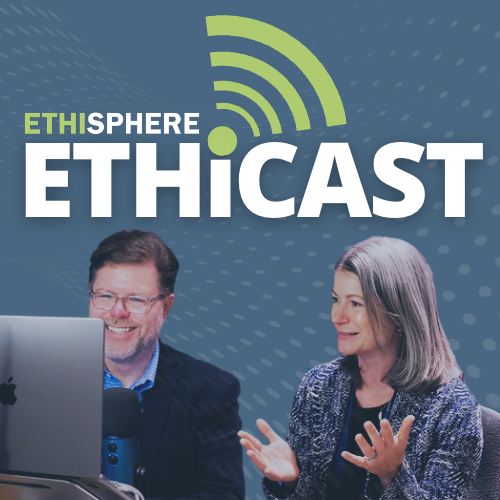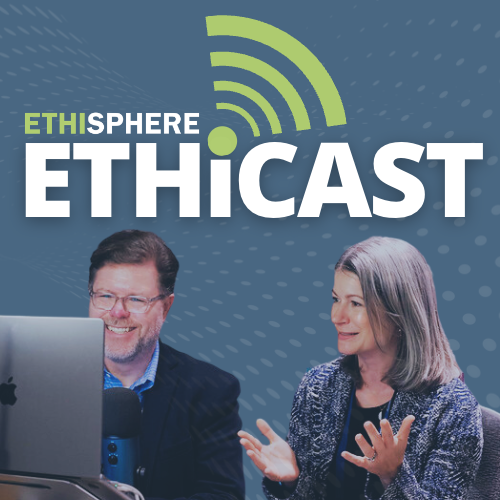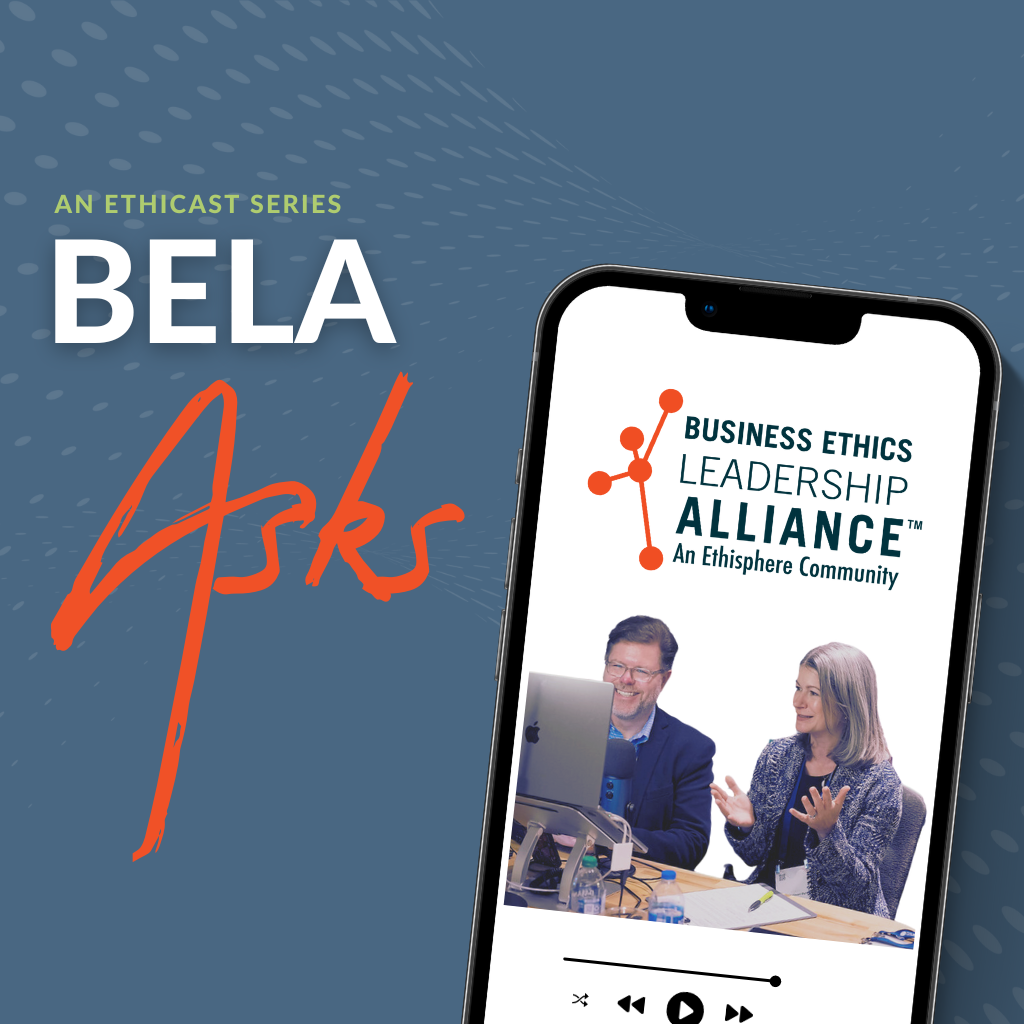[00:00:00] Speaker A: Hi everyone. Today we'll discuss how Best Buy is raising the bar when it comes to developing a code of ethics. I'm your host, Bill Coffin, and this is the Ethicast.
It's easy to write and roll out a code of ethics. Really easy. In fact, companies do it all the time. And that's the problem for so many organizations. The creation of their code of ethics is something that they don't spend a huge amount of time or effort on, and they see it as little more than a rule book by which employees are expected to abide. But not Best Buy. There codes of ethics play a very important role, not just in setting high integrity expectations for the organization, but in establishing a cultural baseline throughout the enterprise. Culture, as the DOJ's Matt Galvin said at this year's Global Ethics Summit, is the worst behavior an organization will tolerate. For that reason alone, organizations should treat their code of ethics as a mission critical piece of their ethics and compliance strategy. And that means treating it as the marquee piece of content development that it is. And joining us today is Best Buy's Senior Director, Global Compliance and Ethics, Bill Underwood. Best buy, a 10 time world's most ethical company's honoree, has an outstanding code of ethics. How it has been developed and redeveloped over the years is both compelling and informative. Bill, thank you very much for joining us today.
[00:01:22] Speaker B: Hey Bill, great to see you. Thanks for the invite.
[00:01:24] Speaker A: Best Buys Code of ethics really excels in terms of its design, its readability, its content and more. In your mind, what makes a really good code and how do you feel that Best Buys code delivers on that?
[00:01:36] Speaker B: Well, thanks for the, for the praise for that, Bill. I appreciate it. It's funny in your opening remarks, referring to it as an easy process, but also a mission critical process, I'm sure for all of us, it falls somewhere in the middle of, of, of all of that. And I, I'll start with this context.
Some people create their codes internally, some people create their codes externally, some people create them through a combination of both. We actually did ours fully externally utilizing a third party vendor. So I think that's sort of important context to think about, as, you know, through a lot of my remarks. But you know, I, I'll say, Bill, it's more than when I think about what makes it so, you know, you used readable and the content and the design aspect of it.
I think it first starts with what you don't see on the paper and that's really the due diligence process that starts the journey. When I Got to Best Buy just almost seven years ago, probably within the first week.
This was a project that my boss said it was mission critical, was, you know, was very timely for me. And so, you know, for me that it was an exciting project, but it was also being very new to an organization. And it was the first time I really engaged with a lot of my subject matter experts across the organization. And so before sort of meeting those SMEs, what I needed to do was do a lot of due diligence in terms of the codes out there. And I would encourage anyone who's undertaking this process really to. To spend a lot of time sifting through multiple different codes and trying to seeing what resonates with you, because they're all wildly different. Some companies put more time into it than others.
In looking at a bunch of codes, I wanted to get a sense for what resonated with me, both from a content perspective, the words, but also from a design perspective. When I went through our RFP process, I wanted to find out from our various vendors that we entered, we spoke to, who did this one, who did that one. Because that was my first guide was I wanted to work with the team that was able to create what I wanted them to create. And what I mean by that is I wanted someone that, that could really stand behind the lack of legalese and I wanted someone who. A team that could also appreciate a design aesthetic for it. And so that's really. That was a big part of probably the first couple of weeks, if not month of the project was really sifting through various codes and highlighting the ones that resonated with me. And that also allowed me the time to bring in subject matter experts, especially my creative team internally to. Because they were going to be a critical part of that project. If, if for those who, if the look and the feel of it, if the look of it is important to you, you've got to bring your creatives in for, as a critical partner for that. And so they actually were a key part of, of that design. We had just launched a new brand campaign and. Well, I think we'll probably speak about that as we were building at the time of building the code. And so we wanted it to be on brand, of course. We also. I wanted there to be a lot of white space for it. I think most people become overwhelmed when they open up a document and it's just, it's just covered in, in text. We, we wanted to have a, a fair amount of white space to, to make the reader comfortable. It also when it Comes to the content. Thinking about, again, the beauty of having that new code is it's the one time that it's written really in a single voice, a single voice that's on brand. And that was what was desperately needed for us because it had been a code for many, many years that had been edited by multiple different voices and really had no consistency to it.
Again, with avoiding the legal ease was, I think, a critical part of what makes it successful. We often refer to our codes as our North Star. Right. And so anytime that there is, you know, any significant new brand work, certainly the code really should follow that brand. And seven years ago, when I did get here, we had a significant brand update at the time. And so that really once, you know, it's funny when I mentioned the first week I got here, here comes the project. Well, about the second or third week I got here, we released this new brand update. And it was readily apparent for me, like this desperate, this absolutely drives the code, this inspires the code. And I could start to see how it, how it would be built out from there. And for us then, it marked one of the first key documents that we released as a company, both internally and externally, that reflected that brand. And so it was. There were a lot of people that were keenly interested in that. Not just the legal teams, not just the compliance teams, but our marketing teams and our creatives really were invested in seeing how this document could take shape because it was, it was brand new font, it was brand new images, it was brand new brand guidelines. And so that made it an exciting aspect of it as well, that it was a reflection of how, how we would put that brand into action for such a universally available document. We recently then had changes to the, to the brand yet again. And so that's a little bit different in terms of how the brand changes. For those that see new spots, whether on television or in print, you're going to see a lot more color brought to life for the Best Buy brand. So that was a fun way, just most recently in 2024, to go back and inject that color into the document? So again, once again, that document felt like it reflected the brand.
[00:07:51] Speaker A: Creating a code of ethics requires a lot of collaboration across enterprise. Can you talk about how you protect your vision for this document while also working with your partners from sister functions within Best Buy?
[00:08:02] Speaker B: Yeah, and again, I think I'll go back to where I started to say the fact that we used an external vendor for this makes what I'm about to say a little bit easier. Because if you're writing it internally, which is how we thought about doing it from the beginning.
That is an overwhelming task as you can imagine. And the idea of having one voice and that is extremely difficult because you have to rely on your internal SMEAS to help draft that. Working externally that helped preserve that, that one voice. And again, I think I'll start from the aspect of the due diligence and in addition to sort of researching all the codes in the beginning I spent a fair amount of time with getting to know the SMEs that would be involved the subject matter experts for the respective topics within that document. And I met with them individually, not as a group like those that might be arsonies for harassment or discrimination or those that might be for anti corruption. I met individually with every single one of them to really convey to them the central, one of the central goals of this project was to have one voice that it wasn't just a combination of 40 different voices from across the company. And so I really encourage them to, as they see that first draft that they're always going to say boy, I wouldn't, I, I don't use the word okay in my writing or that I, I never use that word. Or I, I hate the way that this is phrased or even the Oxford comma, you know, like if you would please kindly respectfully put that aside and if you could for the sake of the document really just focus on where in this, in your section does it not align with our company policy or does it not align, does it not reflect the legal, the current legal landscape? And if you could kindly keep your, your comments just strictly to that, then we will achieve that, that goal of that one voice. And I will say I was pleasantly surprised that, and not because of the company I work for, but just because of human nature to be honest like that people really complied with that and they, they kept it to, they kept it to those, those that this just isn't accurate or this isn't, this doesn't represent our policy.
And you know, people saying like, oh, I really had to like, I hate the word okay. I hate using the word okay. And I had to stomach it. But so I think that came through and allowed us to really avoid, have a document that really speaks to all 85,000 of us across the enterprise start to finish.
[00:11:00] Speaker A: About how long of a project was.
[00:11:01] Speaker B: That back in 2018?
It was probably a year long project.
We published that in I believe June of 2018, 19 until actually probably even 15 months. I probably started on that project in the Very early stages of 2018. And we published in the summer of 19.
[00:11:27] Speaker A: What kind of feedback have you gotten on the code so far? And how will that feedback guide your future decisions around future updates of the code?
[00:11:34] Speaker B: I would imagine for a lot of my peers, the biggest compliment anybody could ever give us for something that you work on that hard, I think the biggest compliment someone can give you is I read it. Yeah, I legitimately read it and I enjoyed it. Like, I found it very informative. It helped, like it. It guided me in one or more instances.
And I know that sounds. That sounds odd, but it isn't a document that oftentimes people spend some time with. And that was.
And I don't think. I think that was due to the amount of time we put into how it would look and how it would read. And so I'm continue to be a stickler on every year with annual edits. I, again, I appreciate you would say this sentence differently. Is it correct? And if it is, if it remains correct, let it lie. And. And so it's that compliment that sort of inspires, encourages me to stay the path of, of protecting. Protecting that soul voice.
[00:12:40] Speaker A: There's a sort of a psychology of the reader involved. People will often look through a document before they actually buckle down and read the document. And if the look of the document puts them off, they may not actually go ahead and read it. And it's a document that really, it just looks good. Like the design of it is super crisp. It's super, like you said, a lot of white space. It's very inviting. It's almost like walking into a Best Buy store itself. Right. You know, it's just. Everything is in its proper place. It's light, it's bright, it's nice to be there. And I really appreciated that about the document. And the language is very human. Like, it's a very accessible kind of language. It's informative, it's on point. But at no point do I ever feel like there is a wall of expertise that's keeping me from what I need to know by way of the document. And so it's really, it's really interesting, just use of language throughout the document, I think.
[00:13:24] Speaker B: Yeah, I appreciate that, but I've never really thought of it in that aspect. That, that, that would be sort of the gateway, if you will, to. I've opened it, I've looked at it. Now might I spend a moment actually sifting through it? And I think that's. It's really well said that never underestimate the power of design, the power of beauty to make one feel comfortable and to invite one into that space.
[00:13:53] Speaker A: Well, Bill, thank you very much for joining us today and for talking about how you've put together this delightful code of ethics. I really appreciate it and I think that our our audience members are going to get a whole lot out of it when they look at it themselves.
[00:14:04] Speaker B: It was great speaking with you, Bill. Thanks so much again for the invite.
[00:14:07] Speaker A: To take a look at Best Buys Code of Ethics for yourself, visit BestBuyEthics.com or follow the link in our show Notes. For some free examples of other best in class codes as well as helpful reports, presentations, webinars, and more, please visit the Ethisphere resource
[email protected] resources. Also, be sure to check out our related Bella Asks episode of the how do I refresh and roll out a Code of Conduct? I'm Bill Coffin and this has been the Ethicast. For more episodes, please Visit the Ethisphere YouTube
[email protected] ethisphere and if this is your first time enjoying the show, please make sure to like and subscribe on YouTube, Apple Podcasts and Spotify. Thanks so much for joining us. And until next time, remember, strong ethics is good business.


